 |
 |
 |
| |
Resistance emergence in macaques administered
Cabotegravir long-acting (CAB LA) during acute infection
|
| |
| |
Reported by Jules Levin
CROI 2017 Feb 14-17 Seattle, WA
webcast:http://www.croiwebcasts.org/console/player/33457?mediaType=slideVideo&L
Jessica Radzio1, Olivia Council1, Mian-er Cong1, James Mitchell1, Shanon Ellis1, Wei Huang2, William Spreen3, Walid Heneine1, Gerardo Garcia-Lerma1
1CDC, Atlanta, GA, USA,2Monogram BioScis, San Francisco, CA, USA,3ViiV Hlthcare, Rsr Triangle Park, NC, USA
Abstract Body:
Drug resistance in individuals who acquire HIV while taking pre-exposure prophylaxis (PrEP) has been rare and mostly limited to those who initiate PrEP during unrecognized acute infection. A long-acting injectable formulation of the HIV integrase inhibitor (INI) cabotegravir (CAB LA) is currently in clinical development as a PrEP agent. We used a macaque model of simian HIV (SHIV) infection to model risks of drug resistance emergence associated to CAB LA initiation during undiagnosed HIV infection.
Six rhesus macaques were infected intravenously with a pathogenic RT-SHIV containing the SIVmac239 integrase, and received 50 mg/kg of CAB LA intramuscularly prior to seroconversion. Macaques received 2 subsequent CAB LA injections 4 weeks apart to sustain plasma drug levels above 4 times the protein-adjusted IC90 (4xPA-IC90) and model humans treated with 600-800 mg every 8-12 weeks. SHIV viremia and mucosal virus shedding was monitored by RT-PCR. Integrase mutations in plasma and rectal/vaginal fluids were monitored by population sequencing. Drug concentrations were measured by LC-MS.
Plasma CAB concentrations throughout weeks 1-15 were above 4xPA-IC90 and remained detectable until week 26. CAB concentrations in rectal, but not vaginal fluids, were also above 4xPA-IC90 throughout weeks 1-15. Median plasma viremia at the time of the first CAB LA injection was 7.8 log10 RNA copies/ml, fluctuated between undetectable (<50 copies) and 4.2 log10 RNA copies/ml throughout week 1-16 of treatment, and gradually increased to a plateau of ~4.0 log10 by week 19. Analysis of integrase sequences in plasma showed emergence of mutations in 3/6 macaques: one animal had G118R/A122T at weeks 8-23, one had E92G at week 20, and one had G140R at week 12, E92Q at weeks 12-19, and Q124R at weeks 22-26. The G118R/A122T and E92Q mutations were also detected in viruses from vaginal and rectal fluids. Phenotypic testing is needed to assess the level of CAB resistance conferred by these mutations.
CAB initiation during acute infection frequently selects for mutations that are known to be associated with resistance to other INI including G118R, E92Q, and E92G. Some of the mutations were detected as early as 8 weeks and persisted during the pharmacologic tail. The finding of G118R and E92Q in rectal and vaginal fluid highlights risks of secondary transmission of these viruses. Our results reiterate the importance of strategies to prevent CAB LA PrEP initiation during undiagnosed HIV infection.
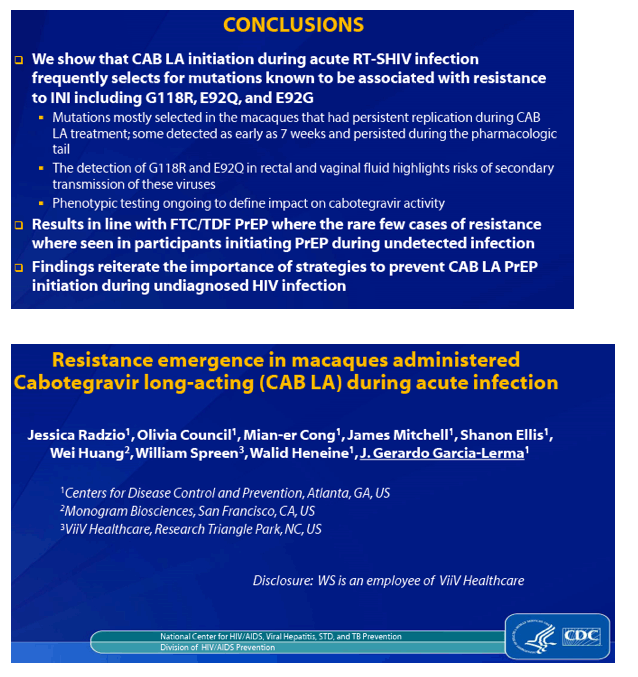
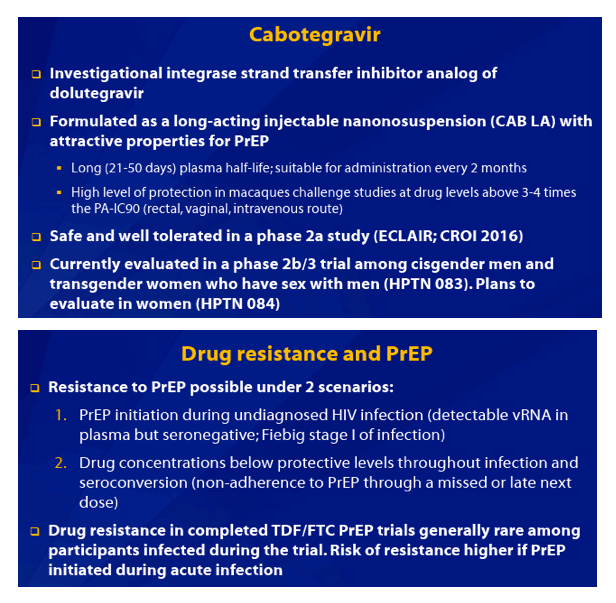
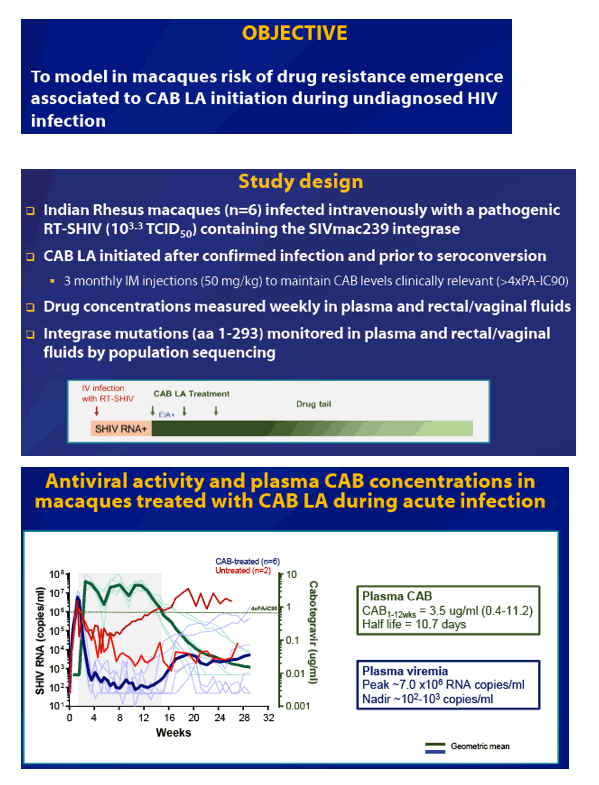
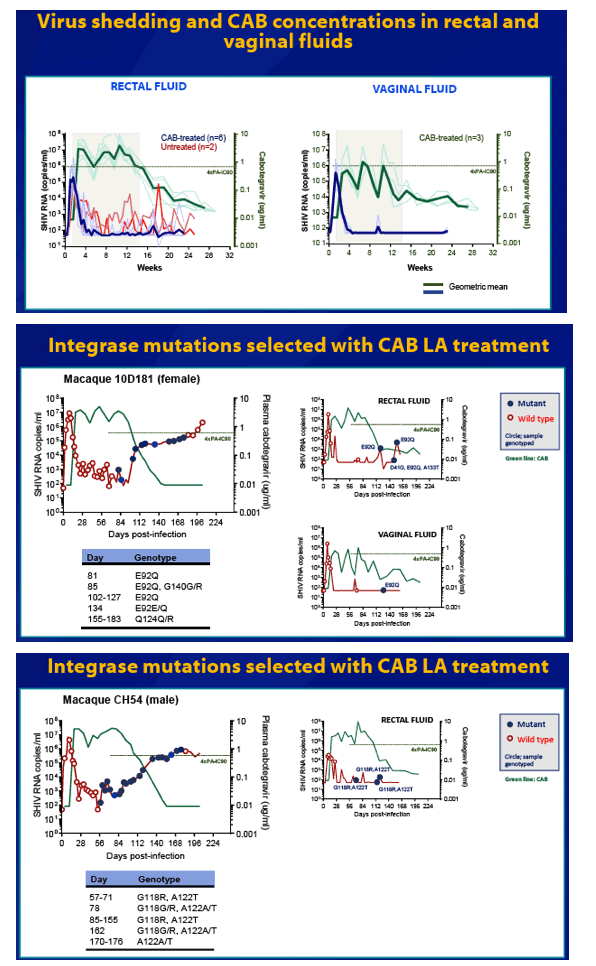
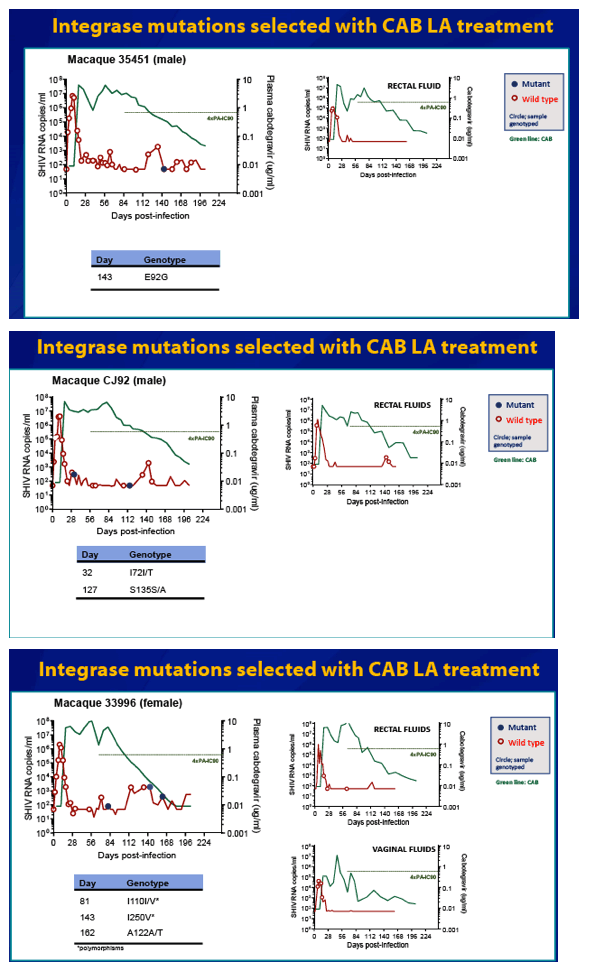
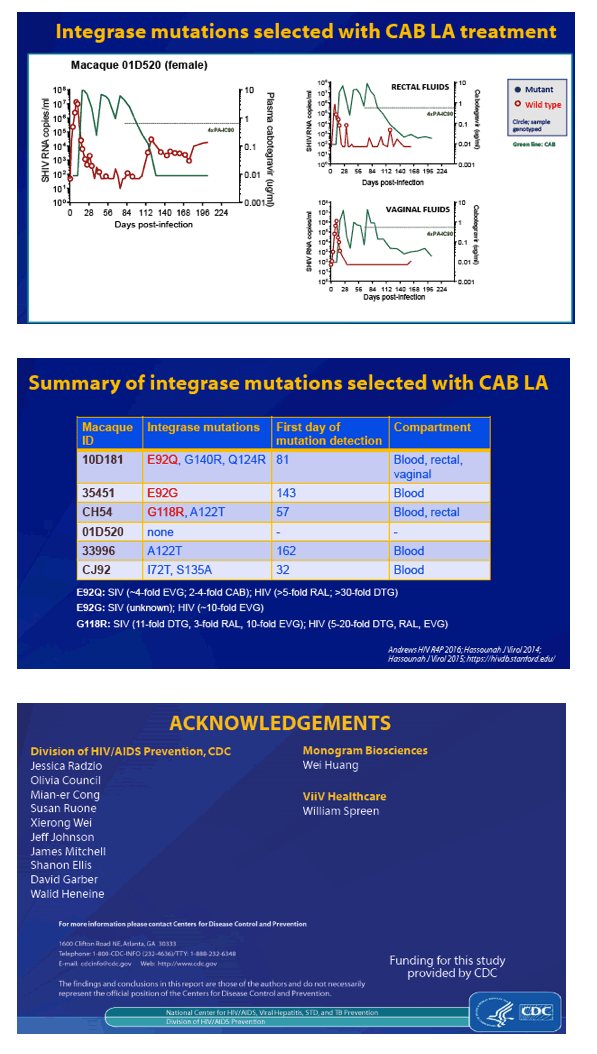
|
| |
|
 |
 |
|
|